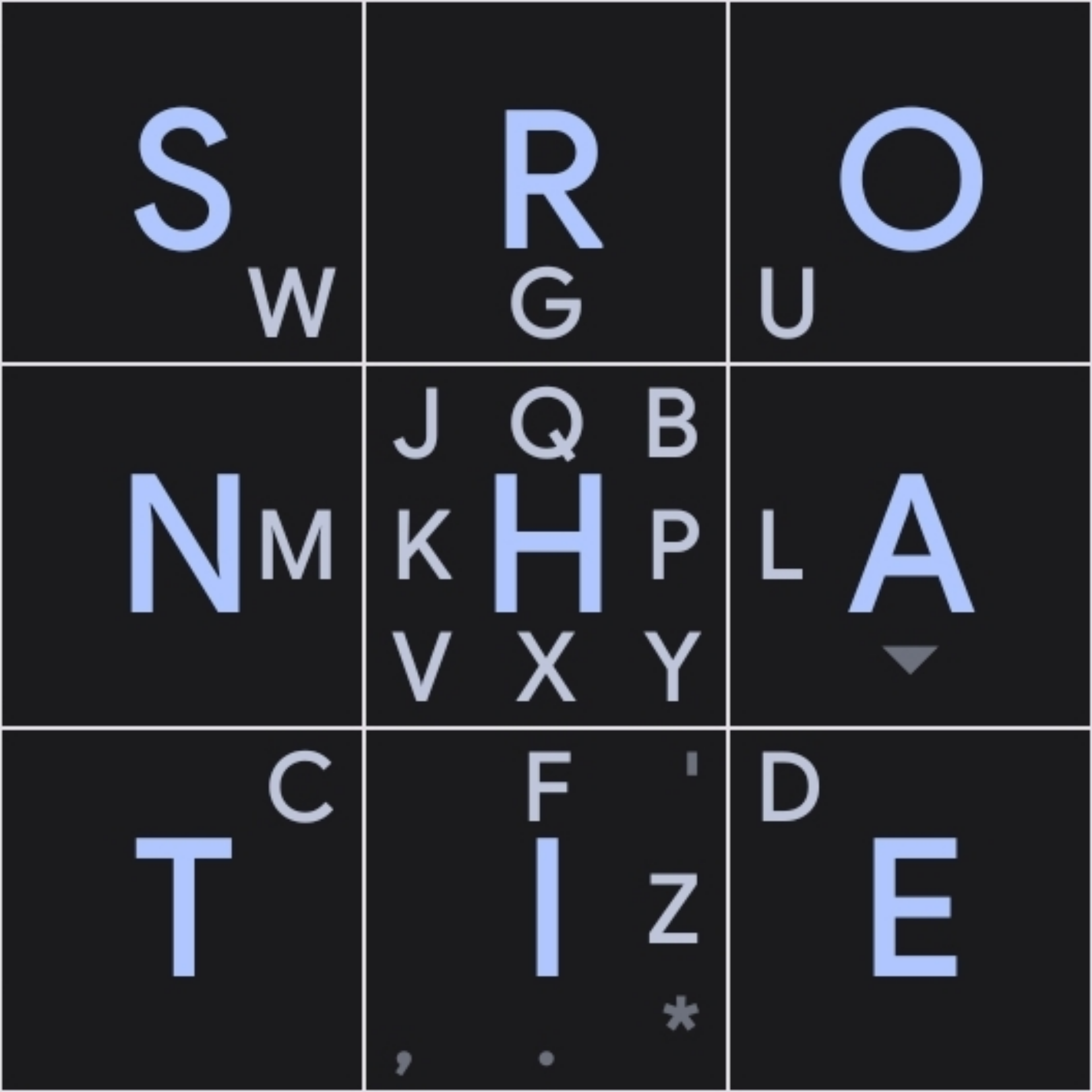On desktop, I use the AI-designed Halmak Keyboard, and its had great results.
Rather than manually picking letter positions, Halmak was designed by an evolutionary algorithm, based on a given set of criteria, and sample text.
I designed the original english thumb-key layout manually, with trial-and-error, and based essentially on 3 criteria:
- Letter frequency
- Alternating thumbs
- Thumbs come from the bottom corners, so lower and edge tiles are easier than higher.
But I did not take into account things like digrams / trigrams, and I don’t know enough about evolutionary algorithms to do it.
Would anyone be interested in tackling this problem?
I’d be willing to give it a try. Have you done any work on the hand movement model, like he shows at 2:06 in the video you posted? Mine would be different from yours, since I type with just one thumb.
The important part is how much time it takes to type key 1 after typing key 2, right? Maybe just logs of people typing with time stamps for every key or something? Then I could make a map to teach the AI with.
Are you particularly attached to the evolutionary algorithm? I might try a few different ones.
Oh it looks like MessagEase has. I should’ve looked at their paper first.
MessageEase unfortunately didn’t do any optimization after their first 9 letters ( and I don’t fully trust what they did there either ). When it came to the swipes, they based it off of whether the letter was curly-shaped or not (curly shaped letters go off the center key)
@Dessalines where did this end up? I have experience with genetic / evolutionary and similarly applicable optimization algorithms and would be interested in helping to optimize the layout.
We could definitely still use some help. Check the github issue, but dev has stalled on it.
I do agree that digrams/trigrams turn out to be the most important thing in this kind of layout. The MessagEase layout seems to get a lot of digrams right, even if it’s only by accident. I think the real problem is that we don’t have a very good model for the relative costs of things like non-alternating thumbs and sliding from the same box after a tap. I think the optimization algorithm would probably not be that hard relative to quantifying the costs of different placements.
True, its tough to say whether things like having the O and U , on the same key is optimal. We do really need someone to help AI design layouts tho.
A YouTube link was detected in your post. Here are links to the same video on Invidious, which is a YouTube frontend that protects your privacy:
A YouTube link was detected in your post. Here are links to the same video on Invidious, which is a YouTube frontend that protects your privacy:
A YouTube link was detected in your post. Here are links to the same video on Invidious, which is a YouTube frontend that protects your privacy:
A YouTube link was detected in your post. Here are links to the same video on Invidious, which is a YouTube frontend that protects your privacy:




